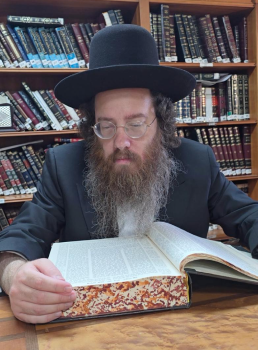Avinu Malkeinu
Question
Answer
Shalom!
Thank you for your question.
Avinu Malkeinu is recited at every Shacharit and Mincha service between Rosh Hashana and Yom Kippur and on fast days.
It originates in the Talmud where it is said that it was composed by Rabbi Akiva. As the story goes, there was once a severe drought, and as a result, the rabbis declared a day of fasting and prayer for rain. The Mincha service that day was held in the public square, and one of the senior rabbis led the service. Unfortunately, even after this elaborate prayer service, led by one of the most esteemed individuals in the community, the people’s prayers remained unanswered. There was no rain in sight.
Then, on his own initiative, Rabbi Akiva stepped up to the podium and began to recite his own impromptu prayers. He said, “Avinu Malkeinu, our Father and King, we have no other King but You! Avinu Malkeinu, for Your sake, have mercy on us!” It then began to rain. When the people saw that Rabbi Akiva was answered after having recited this prayer, it was written down and continues to be used.
Avinu Malkeinu has gone through a number of changes over the years. As noted above, Avinu Malkeinu was originally a two-line prayer. It was then expanded even further, culminating in the forty-four stanzas that are most common today. There are a number of versions of Avinu Malkeinu in use today that have been adopted by different communities. For example, there are versions of Avinu Malkeinu with twenty-two verses (arranged according to the letters of the alphabet), twenty-five verses (Siddur Rav Amram Gaon), twenty-seven verses (the custom in most Yemenite communities), twenty-nine verses (the custom in Spanish and Portuguese communities), thirty-one or thirty-two verses (the custom in Syrian communities), and fifty-three verses (the custom of the Salonika community). There are other customs, as well.
Avinu Malkeinu is recited while standing, and it is customary to open the aron Kodesh when it is recited. A minyan is not required for Avinu Malkeinu and therefore one recites it when praying alone. One who already recited Avinu Malkeinu in a previous minyan is permitted to recite it again at a later minyan along with the congregation. Although Tachanun is not recited in a mourner’s home, Avinu Malkeinu is recited as normal.
There is a difference of opinion whether Avinu Malkeinu should be recited on Shabbat or Erev Shabbat. Common custom, especially in Ashkenazic congregations, is not to recite Avinu Malkeinu on Shabbat, or even Friday afternoons. Nevertheless, when Yom Kippur falls out on a Shabbat, Avinu Malkeinu is recited at the Ne’ila service. The Minhag of the Sephardim is to recite Avinu Malkeinu even on Shabbos.
Source
Taanit 25b; OC 584,601,602,623 with commentaries.
